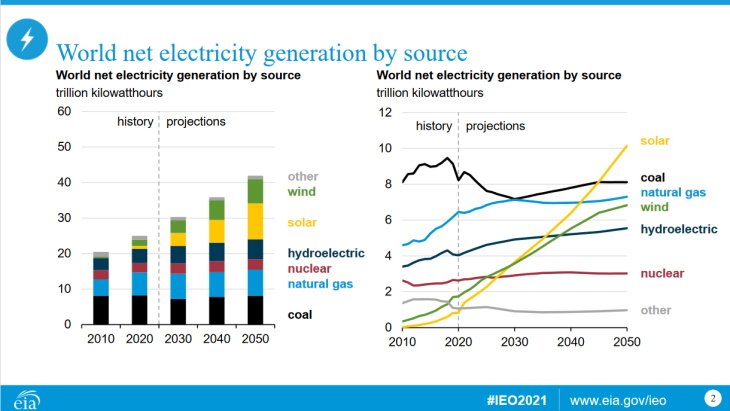The International Energy Outlook provides long-term projections with its Reference case providing a baseline from which to measure the impact of various assumptions. Strong economic growth, particularly in developing economies in Asia, will drive global increases in energy consumption despite pandemic-related declines and long-term improvements in energy efficiency, the report finds. By 2050, global energy use in the Reference case increases nearly 50% compared with 2020.
Increases in electricity generation are projected to be primarily from renewable generation sources. "As renewables - particularly solar and wind - become cost‐competitive, the IEO2021 Reference case projects that all post‐2020 electricity generation growth in OECD regions will come from those sources and that they will displace an increasing share of existing non‐renewable, mostly fossil fuel‐based, sources," the report says. However, it notes, the projected growth in renewables "is uncertain and may largely depend on changes to regulatory policies and market rules, large and cost‐effective supply chains to support renewable installations, and a sufficient amount of conventional generation technologies or storage to back intermittent renewable capacity."
Global emissions rise throughout the projection period, although slowed by regional policies, renewable growth, and increasing energy efficiency.
"Even with growth in renewable energy, without significant policy changes or technological breakthroughs, we project increasing energy-related carbon dioxide emissions through 2050," EIA Acting Administrator Stephen Nalley said at the report's launch, which was hosted by the Center for Strategic & International Studies Energy Security and Climate Change Program.
The full IEO2021 is available here.





_23621.jpg)

_63865.jpg)
_18570.jpg)





